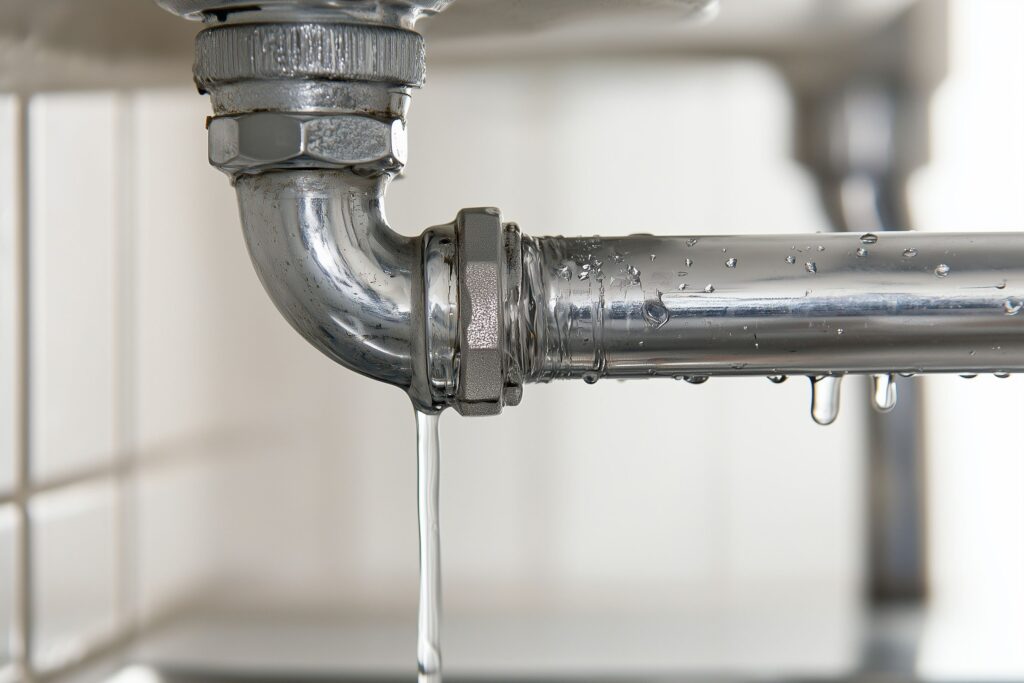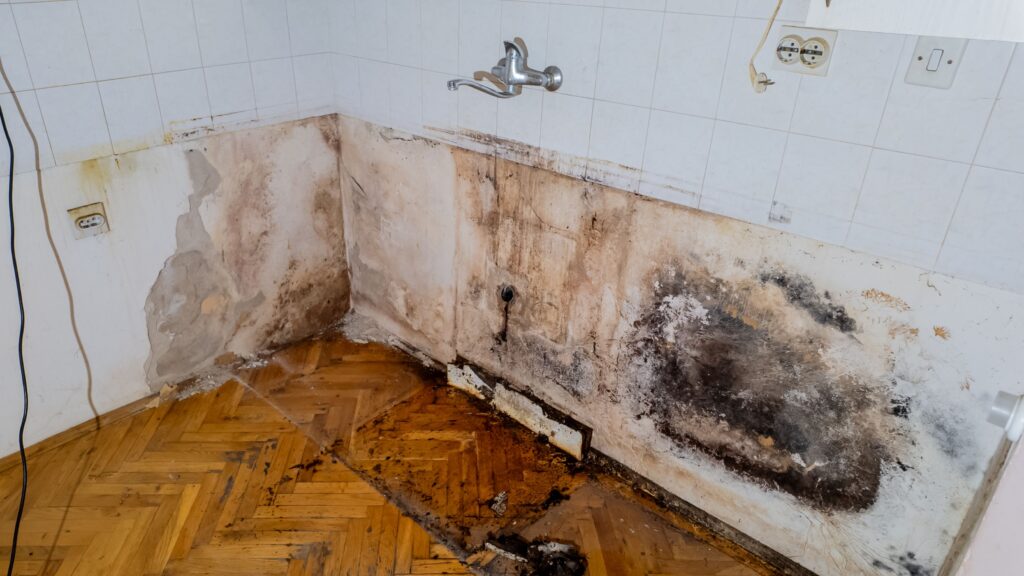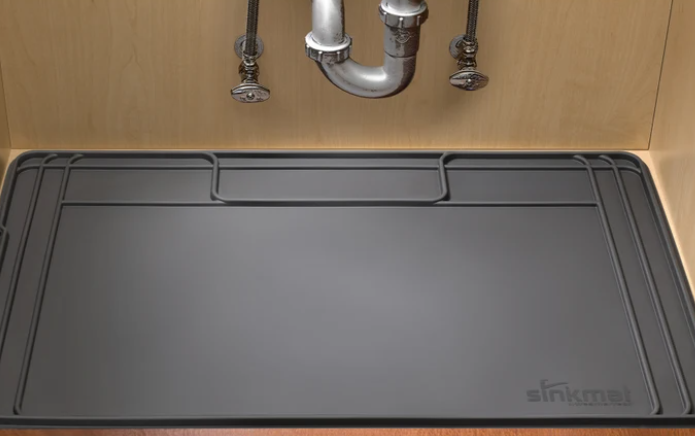When you think of the most vulnerable areas in your home for mold, your mind might jump to the basement, the attic, or that neglected crawl space. But there’s a hidden hotspot lurking in plain sight: right behind your kitchen sink. This seemingly innocuous space—where dishes are cleaned, produce is rinsed, and hands are frequently washed—is often a breeding ground for toxic mold. Why? Because the perfect storm of water, warmth, and organic material combines to create an ideal environment for mold growth, especially when leaks go unnoticed.
In this post, we’ll explore why the kitchen—especially the area behind the sink—is such a common site for dangerous mold infestations, what the health consequences can be, and what you can do to protect your home and family.
Why the Kitchen Sink Area is a Mold Magnet

1. Slow Leaks You Can’t See
Slow leaks are among the most insidious contributors to mold growth. Unlike a burst pipe or flood that prompts immediate action, a small drip behind the sink can go unnoticed for weeks or months. Over time, that constant moisture provides the perfect conditions for mold spores to thrive.¹
2. Deficient Caulking and Sealants
Kitchen sink caulking deteriorates over time. When the seal between the sink and countertop becomes cracked, water from splashing or spills can seep through the gaps. From there, gravity does its job, pulling water behind and below the sink, straight into the back panel of cabinetry and the drywall behind it.
3. Spills and Splash Zone Neglect
It’s normal for water to splash around while rinsing dishes or prepping vegetables. If these spills are not wiped up promptly—or worse, if they occur near poorly caulked edges—the water travels into the unseen cavities below and behind the sink area. This accumulation of moisture might not be visible, but it’s working overtime to support mold growth.
4. Burst or Loose Pipes
A sudden burst or even a slightly loosened pipe can cause a fast-moving disaster. While some water might be mopped up quickly, much of it escapes into hidden areas: under the sink, behind the back panel of the cabinet, and into the drywall and flooring. If it’s not dried out within 24 to 48 hours, mold will begin to grow.²
5. Water Wicks Behind Cabinet Panels
Many homeowners don’t realize that most kitchen cabinetry backs are made of particle board or thin laminate over pressboard. When exposed to water, these materials swell and trap moisture. Water can also wick vertically and laterally through these porous materials, spreading into adjacent cabinets and even under the kitchen floor.
The Health Risks: What’s Lurking Behind the Sink?

The issue isn’t just cosmetic damage or a musty odor—it’s your health. The real danger lies in the types of mold that thrive in chronically damp, hidden spaces.
Stachybotrys (aka “Black Mold”)
This infamous species of mold is highly toxic and is commonly found in water-damaged drywall and wood. Stachybotrys produces mycotoxins that can cause a range of symptoms, including:
- Chronic fatigue
- Persistent coughing
- Neurological issues like memory loss and confusion
- Skin irritation
- Eye problems
- Immune system suppression³
Chaetomium
Often found alongside Stachybotrys in water-damaged buildings, Chaetomium is another dangerous mold species that releases mycotoxins. It’s particularly common in places where water has seeped behind surfaces and remained undetected. Exposure can lead to:
- Respiratory irritation
- Headaches
- Nosebleeds
- Autoimmune responses in sensitive individuals⁴
What makes Chaetomium particularly problematic is that it often emits a strong, musty odor before it becomes visible—an early warning sign that many homeowners miss.
Mold Can Spread Farther Than You Think
Even if the initial water damage was confined to a small area behind the kitchen sink, mold doesn’t respect boundaries. Once established, mold spores can travel:
- Through the cabinetry: Spreading into adjacent drawers, shelves, and storage areas.
- Under the flooring: Especially in laminate or vinyl flooring, mold can grow in the dark, damp space between the subfloor and the finish floor.
- Into the air: Spores can become airborne and travel throughout your home via HVAC systems, vents, and open doorways.
All of this happens silently—without warning—until someone starts experiencing unexplained health issues or the odor becomes unbearable.
Long-Term Exposure and Its Effects on Your Family
The kitchen is the heart of the home—a hub of daily activity where families gather to cook, eat, and socialize. That makes prolonged exposure to hidden mold particularly troubling. Here’s why:
- Inhalation during meal prep: The act of cooking, washing dishes, or even opening cabinets can disturb mold spores and cause them to become airborne.
- Children and elderly at greater risk: Developing immune systems (in kids) and weakened immunity (in older adults) make these groups more vulnerable to mold-related illnesses.
- Cumulative exposure: Because kitchen sink areas are used daily, exposure to mold is frequent and ongoing, which compounds health risks over time.⁵
What You Can Do: Prevention and Protection

1. Act Fast with Professional Mold Testing
If you suspect water damage or notice musty odors near your kitchen sink, don’t wait. DIY test kits often miss key indicators and don’t provide species-level identification. Instead, contact a professional for a comprehensive mold analysis.
IndoorDoctor offers a Virtual Mold Testing Package that includes expert guidance, lab-grade testing, and rapid results—no need to wait or guess. This is an ideal first step to confirm whether you’re dealing with harmful mold like Stachybotrys or Chaetomium.
👉 Get professional mold testing here
2. Install a Protective Sink Mat
One simple but highly effective tool in preventing future water damage is a sink mat. These mats sit under the sink base and catch leaks or drips before they can penetrate the cabinet or wall.
We recommend the WeatherTech SinkMat, designed to trap up to 1 gallon of liquid and alert homeowners before damage spreads.
👉 Protect your cabinets with a sink mat
3. Re-Caulk and Seal Regularly
Inspect the caulking around your kitchen sink at least once a year. Look for cracking, separation, or discoloration—any of which can indicate water is getting through. Remove and reapply high-quality waterproof caulk to maintain a tight seal.
4. Use a Moisture Meter
For the proactive homeowner, a moisture meter is a great investment. Periodically scan areas under and around the sink to detect hidden moisture buildup.
5. Improve Ventilation
If your kitchen doesn’t have proper ventilation, humidity levels can remain elevated, encouraging mold growth. Consider installing or upgrading a range hood or using a dehumidifier during humid months.
Mold Behind Your Kitchen Sink: Don’t Wait Until It’s Too Late
Mold behind your kitchen sink might be out of sight, but it shouldn’t be out of mind. Because this area is used daily and frequently exposed to water, it’s one of the most critical spaces in your home to monitor for hidden mold issues. The health risks from long-term exposure are real—and in some cases, severe.
By understanding the warning signs and taking swift action, you can protect your home and your loved ones. Start with professional mold testing, install protective products like a sink mat, and stay on top of maintenance. Your kitchen will be cleaner, safer, and healthier as a result.
End Notes
- EPA. “A Brief Guide to Mold, Moisture, and Your Home.” U.S. Environmental Protection Agency. https://www.epa.gov/mold/brief-guide-mold-moisture-and-your-home
- CDC. “Mold After a Disaster.” Centers for Disease Control and Prevention. https://www.cdc.gov/disasters/mold/index.html
- Hope, Janette. “A Review of the Mechanism of Injury and Treatment Approaches for Illness Resulting from Exposure to Water-Damaged Buildings, Mold, and Mycotoxins.” ScientificWorldJournal, 2013.
- Kelman, Bruce J., et al. “Toxicology of Chaetomium globosum.” Regulatory Toxicology and Pharmacology, 2004.
- Miller, J. D. “Mycotoxins in Indoor Air: A Review.” Indoor Air, 1998.




